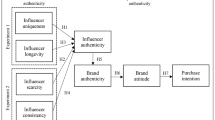Abstract
This article introduces a critical theory-induced approach to the concept of place branding to expose the ethical drawbacks within the field. The author argues that the dominant approaches and definitions of place branding limit the thinking of scholars to market-driven subjects, such as measurement, effectiveness and strategies. It is difficult even to discuss ethical issues at a conceptual level within these approaches. With an attempt to further investigate these widely ignored issues, place branding is redefined through a communicative action framework, and a two-step model of place branding is devised – composed of domestic communicative action (Step 1) and international communicative action (Step 2). Step 1 highlights (i) legitimacy and (ii) inclusion as ethical concerns, whereas Step 2 brings in the question of (iii) consistency between the messages in the domestic and international arena. Critical theory makes it possible to take an analytical look at the mainstream approaches and present ethical issues at the conceptual level. Future studies should aim to integrate this theoretical approach to the practice of place branding.
Similar content being viewed by others
Notes
For the original work, the reader can refer to Hall (1996).
For analytical purposes, the assumption in the second step is that parties have reached a consensus in the former step and are subsequently engaging the target audience as one single actor.
References
Anholt, S. (2006) Is place branding a capitalist tool? Place Branding 2 (1): 1–4.
Anholt, S. (2007) Competitive Identity: The New Brand Management for Nations, Cities and Regions. Basingstoke, UK: Palgrave Macmillan.
Anholt, S. (2008) Place branding: Is it marketing, or isn’t it? Place Branding and Public Diplomacy 4 (1): 1–6.
Anholt, S. (2010) Places: Identity, Image and Reputation. Basingstoke, UK: Palgrave Macmillan.
Braun, E. and Zenker, S. (2010) Towards an integrated approach for place brand management. Paper presented at the 50th European Regional Science Association Congress; 19–23 August, Jönköping, Sweden.
Burmann, C. (2010) A call for ‘User-generated branding’. Journal of Brand Management 18 (1): 1–4.
Caldwell, N. and Freire, J. (2004) The differences between branding a country, a region and a city: Applying the brand box model. Journal of Brand Management 12 (1): 50–61.
Freire, J. (2005) Geo-branding, are we talking nonsense? A theoretical reflection on brands applied to places. Place Branding 1 (4): 347–362.
Goodall, B., Trethewey, A. and McDonald, K. (2008) Strategic Ambiguity, Communication, and Public Diplomacy in an Uncertain World: Principles and Practices. Phoenix, AZ: Consortium for Strategic Communication, Arizona State University.
Govers, R. and Go, F. (2009) Place Branding: Glocal, Virtual and Physical Identities, Constructed, Imagined and Experienced. Basingstoke, UK: Palgrave Macmillan.
Habermas, J. (1984) The Theory of Communicative Action. Boston, MA: Beacon Press.
Habermas, J. (1990) Moral Consciousness and Communicative Action. Cambridge, MA: MIT Press.
Habermas, J. (1998) On the Pragmatics of Communication. Cambridge, MA: MIT Press.
Habermas, J. (2001a) Between Facts and Norms: Contributions to a Discourse Theory of Law and Democracy. Cambridge, MA: MIT Press.
Habermas, J. (2001b) The Postnational Constellation: Political Essays. Cambridge, MA: MIT Press.
Habermas, J. (2006) Acceptance speech. Bruno-Kreisky Award Ceremony for the Political Book of 2005; 9 March, Vienna.
Hall, S. (1996) Modernity: An Introduction to Modern Societies. Cambridge, MA: Blackwell.
Hankinson, G. (2004a) Relational network brands: Towards a conceptual model of place brands. Journal of Vacation Marketing 10 (2): 109–121.
Hankinson, G. (2004b) Repertory grid analysis: An application to the measurement of destination images. International Journal of Nonprofit and Voluntary Sector Marketing 9 (2): 145–153.
Hankinson, G. (2009) Managing destination brands: Establishing a theoretical foundation. Journal of Marketing Management 25 (1): 97–115.
Hayden, C. (2011) The lessons of hyphenated diplomacy. PDin Monitor, online journal, http://uscpublicdiplomacy.org/index.php/pdin_monitor/article/the_lessons_of_hyphenated_diplomacy/, accessed 4 June 2011.
Jackson, P.T. (2003) Defending the west: Occidentalism and the formation of NATO. Journal of Political Philosophy 11 (3): 223–252.
Jackson, P.T. (2006) Civilizing the Enemy: German Reconstruction and the Invention of the West. Ann Arbor, MI: University of Michigan Press.
Jahardan, N. (2010) Niche diplomacy gets Qatar to its goal. Khaleej Times article, 30 December, http://www.khaleejtimes.com/DisplayArticleNew.asp?xfile=/data/opinion/2010/December/opinion_December142.xml§ion=opinion, accessed 4 March 2011.
Jansen, S.C. (2008) Designer nations: Neo-liberal nation branding – Brand Estonia. Social Identities 14 (1): 121–142.
Kaneva, N. (2011) Nation branding: Toward an agenda for critical research. International Journal of Communication, online journal, http://ijoc.org/ojs/index.php/ijoc/article/view/704, accessed 4 June 2011.
Kaneva, N. and Popescu, D. (2011) National identity lite: Nation branding in post-communist Romania and Bulgaria. International Journal of Cultural Studies 14 (2): 191–207.
Katz, E. and Lazarsfeld, P.F. (1955) Personal Influence: The Part Played by People in the Flow of Mass Communications. New York: Free Press.
Kavaratzis, M. (2004) From city marketing to city branding: Towards a theoretical framework for developing city brands. Place Branding 1 (1): 58–73.
Kavaratzis, M. and Ashworth, G.J. (2006) City branding: An effective assertion of identity or a transitory marketing trick? Place Branding 2 (3): 183–194.
Klapper, J.T. (1960) The Effects of Mass Communication. New York: Free Press.
Kotler, P. and Gertner, D. (2002) Country as brand, product, and beyond: A place marketing and brand management perspective. Journal of Brand Management 9 (4): 249–261.
Kotler, P. and Keller, K. (2000) Marketing Management. Upper Saddle River, NJ: Prentice Hall.
Marsh, J. (1995) Critique, Action, and Liberation. Albany, NY: State University of New York Press.
McCarthy, T. (1999) On reconciling cosmopolitan unity and national diversity. Public Culture 11 (1): 175–208.
Morgan, N.J., Pritchard, A. and Piggott, R. (2003) Destination branding and the role of the stakeholders: The case of New Zealand. Journal of Vacation Marketing 9 (3): 285–299.
Olins, W. (2004) On Brand. London: Thames & Hudson.
Payne, G. (2009) Reflections on public diplomacy: People-to-people communication. American Behavioral Scientist 53 (4): 579–606.
Payne, G. and Georgaki, K. (2009) ‘Yes We Can!’ Changing the image and mediated reality: A grassroots campaign: 2008 Rosarito film project. Paper presented at the International Academy of Business Disciplines Conference; 1–4 April, St. Louis, MO.
Payne, G., Sevin, E. and Renedo, A. (2011) Role of consultants and locals in place branding: The case of Rediscove Rosarito (Rosarito, Mexico). Paper presented at the 2nd Place Branding Conference; 20–22 January, Bogota, Colombia.
Peterson, P.G. (2002) Public diplomacy and the war on terrorism. Foreign Affairs 81 (5): 74–94.
Putnam, R.D. (2009) Diplomacy and domestic politics: The logic of two-level games. International Organization 42 (03): 427–460.
Severin, W. and Tankard, J.W. (2001) Communication Theories: Origins, Methods, and Uses in the Mass Media. New York: Addison Wesley Longman.
Sevin, E. (2010a) Controlling the Message: A Strategic Approach to Nation Branding. Saarbrucken, Germany: LAP Lambert Academic Pub.
Sevin, E. (2010b) See for yourself: Rebranding Northern Baja through public diplomacy. Exchange: The Journal of Public Diplomacy 1 (Inaugural Issue): 33–40.
Syssner, J. (2010) Place branding from a multi-level perspective. Place Branding and Public Diplomacy 6 (1): 36–48.
Szondi, G. (2008) Public diplomacy and nation branding: Conceptual similarities and differences. Discussion Papers in Diplomacy, http://www.clingendael.nl/publications/2008/20081022_pap_in_dip_nation_branding.pdf, accessed 4 March 2011.
Van Ham, P. (2001) The rise of the brand state. Foreign Affairs 80 (5): 2–8.
Acknowledgements
The author would like to express his gratitude to Dr Craig Hayden of American University, Ms Erica Seng of COTELCO and two anonymous reviewers for their helpful comments and feedback.
Author information
Authors and Affiliations
Rights and permissions
About this article
Cite this article
Sevin, E. Thinking about place branding: Ethics of concept. Place Brand Public Dipl 7, 155–164 (2011). https://doi.org/10.1057/pb.2011.15
Received:
Revised:
Published:
Issue Date:
DOI: https://doi.org/10.1057/pb.2011.15




